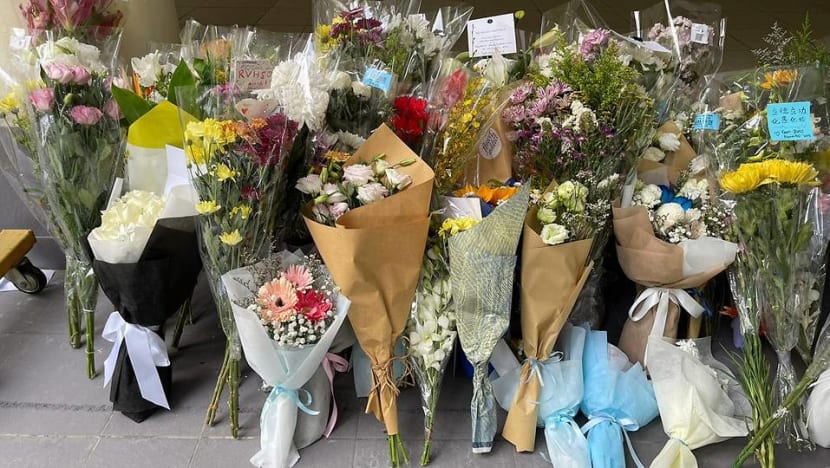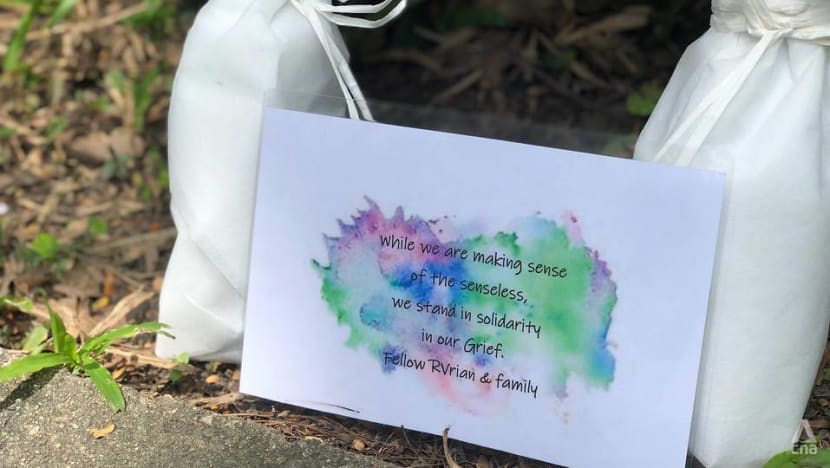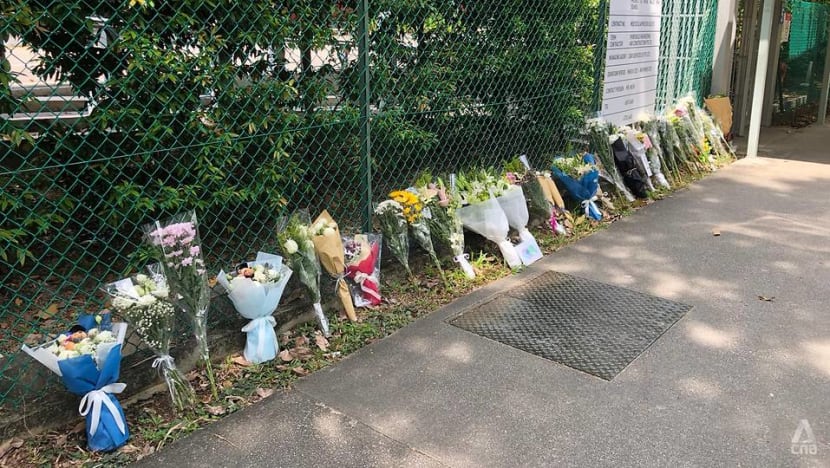Commentary: Life after a traumatic event and the problem with the resilience narrative
Along with the push for greater mental health literacy after the River Valley High School death, we should also rethink our belief that resilience means putting on a brave face and soldiering on.

Mr Chan says he will address concerns on supporting schools and students in a ministerial statement. (Photo: Facebook/Chan Chun Sing)
SINGAPORE: It’s okay not to be okay.
Fewer words have been more pertinent since the River Valley High School death.
On Monday (Jul 19), a 13-year-old student was found motionless in a school toilet with multiple wounds and pronounced dead. The next day, a 16-year-old student was charged with his murder.
In court, the police prosecutor revealed that the perpetrator had been referred to the Institute of Mental Health (IMH) for assessment after he attempted suicide when he was 14.
In the wake of the incident, an outpouring of condolences from the public and political leaders alike flooded social media, including messages from President Halimah Yacob and Prime Minister Lee Hsien Loong.
Most well-wishes, if not all, carried the same underlying message: It is okay to struggle. Asking for help isn’t a sign of weakness. Let’s all look out for each other.
READ: 540 River Valley High students, staff members sought psychological support after incident: Chan Chun Sing
But while the mental health platitude might be sound advice when dealing with a breakup, “it’s okay not to be okay” can feel hollow when you’re confronting the spectre of confusion, shock, sadness and anxiety, among other complex emotions, after a schoolmate’s death and another’s arrest without a roadmap.
When the world deals us a cruel blow, we’re made aware of our humanity. Thrown off course, most people, at least in my experience, aim to bounce back to normal routines quickly.
Often, this resembles our idea of resilience.
READ: Commentary: Effects of trauma can last for years after episodes so don’t rush healing
THE RESILIENCE NARRATIVE
Two days after the incident, on a Wednesday, the Ministry of Education’s (MOE) director-general of education Wong Siew Hoong said 97 per cent of River Valley High students returned to school following the public holiday on Tuesday. This was similar to the regular attendance on any given day, he said.
“This is the resilience of our students, and we are proud of them,” he added.
Online commenters questioned MOE’s response, saying the school should have allowed students to deal with their trauma rather than return to life as it was.
Member of Parliament Patrick Tay (PAP-West Coast) also asked why the school wasn’t given a “time-out” in Parliament on Tuesday (Jul 27).
In response, Minister for Education Chan Chun Sing said that the consensus was for students to come together to support one another while processing the situation, rather than let individuals grieve alone at home. For students who chose to stay home, teachers checked in with them.

This makes some sense. Anyone who has been through personal tragedy can attest that the world doesn’t stop just because your life feels like it has. Some also prefer to have other people around and a regular routine to heal.
But could an appearance of “normal” behaviour be a sign of suppression, not strength?
READ: River Valley High death: MOE and schools will continue to be 'vigilant' about campus security
Similarly, Mr Chan praised the principal and teachers for setting aside their grief and pain to care for the students in the immediate aftermath.
Not everyone is able to grieve immediately, and waiting for a better time to attend to one’s needs sounds like prudent advice.
But those who expressed concern for the well-being of teachers suggest that commending this action unwittingly sends the message that it’s okay not to be okay, as long as you don’t show it.
OUR UNDERSTANDING OF RESILIENCE
This collective response to mental health reveals a disconnect between what we believe and what we do.
Many of us would tell loved ones going through hardship that asking for a break isn’t weakness. Yet, when it comes to our public selves, we often mistake bravado for bravery.
Having had a rough childhood, I made this same mistake for two decades until I sought help. Bravado is the façade I put on when I avoid being brave and facing difficult emotions. It’s a quick fix to appear okay to the average person, in hopes that I can fake it until I make it.
But bravado is akin to the straw-and-stick houses in the fable The Three Little Pigs – a false, flimsy front of courage that can be taken down with a single, sometimes small, trigger.

Bravado is resuming regular programming after a traumatic incident by building a bridge over the ocean of grief when the only way to get across is to swim through it.
The term “high-functioning” comes to mind, typically used to describe someone with a disability, chronic illness, or mental health issue who functions mentally or physically at a higher level than others with the same condition. To the average person, they wouldn’t appear to suffer from the condition.
I’ve since learnt from a therapist that, like me, some high-functioning people turn to hyper-independence after a traumatic incident – a quality that can present as strength and resilience.
Despite being given the same advice as everyone else, people with this extreme version of independence have difficulty believing it’s truly okay to not be okay when we see others being applauded for appearing strong.
They might be performing or putting on a façade too. But coupled with the social and self-stigma of asking for help, it makes it even harder to admit we need help when what’s being preached contradicts what’s being praised.
Just like bravado isn’t bravery, appearing “high-functioning” isn’t the same as being resilient.
REDEFINING RESILIENCE
When our entrenched understanding of resilience involves manning up, not breaking down, we learn too late about the opportunity cost of staying strong for short-term convenience or comfort.
In reality, the discomfort of facing up to complex and difficult emotions is far less costly than being a walking time bomb, believing you’re okay when you’re really not.
READ: Coping with trauma: Acknowledge incident and talk about emotions, say experts after River Valley High death
After the River Valley High incident, I spoke with trauma experts on how to cope with the trauma. Many said acknowledging the incident and talking about emotions would help the healing process.
There is no timeline on recovery either. Trauma therapist Natalia Rachel defined trauma as “when a past experience of threat, which is over, is still living, breathing and existing in us”.
Trauma is “not the event itself, but what shows up after”, she added.
On Tuesday (Jul 27) in Parliament, Mr Chan also spoke about the support measures to be given to schools and students, including giving all teachers “enhanced professional development” on mental health literacy as a baseline and deploying more teacher-counsellors in the next few years.
READ: MOE to strengthen support networks in schools; all teachers to get enhanced training on mental health literacy
READ: 'Schools need a lot more resources and support to help students with mental health issues': President Halimah
But these plans might not have their full intended effect if we don’t practise what we preach.
Resilience entails first being authentic about one’s emotions, before we can deal with them. It’s about modelling what it means to not be okay, not simply saying it, so that others going through similar struggles would likely feel less afraid in openly letting down their guard too.
A common piece of advice that comes up whenever I work on trauma-related stories is that people who’ve been through a traumatic incident need to see one another grieving. Being weak together essentially makes the individual stronger, because they understand they’re not alone.
There is little use telling someone you’re also sad, angry or in pain if you never show it. In fact, putting on a brave front can push people away, even if you may have intended for them to lean on you.

In my experience, going through traumatic events can shatter the world that you knew. The intuitive reaction would be to harden up and avoid anything that makes us feel unsafe again, such as avoiding triggers and confronting emotions that may remind us of the events.
But as counterintuitive as it may seem, I’ve found true resilience doesn’t rush to fix these broken pieces. It accepts that they are broken, and then pays attention to each piece, each emotion, to help us develop a fuller and deeper understanding of ourselves and our world.
With resilience, we learn to manage our emotions with curiosity and compassion, no longer afraid of messy or complex ones.
Resilience abandons the rigid idea of a black-and-white world, where we are protected by an illusion of certainty. It adopts a nuanced view of the world and learns to embrace uncertainty.
Resilience isn’t about illusions of power, assuring ourselves the world won’t break us anymore. It’s knowing we will find the ability to begin again if it happens.
Admittedly, an old-school resilience narrative is attractive. It’s all about strength and toughness. It equates hardness to invincibility.
But the way I see it, soft things are harder to break.
Grace Yeoh is a senior journalist with CNA Insider.














